Rui Xia
CLIP-AE: CLIP-assisted Cross-view Audio-Visual Enhancement for Unsupervised Temporal Action Localization
May 29, 2025Abstract:Temporal Action Localization (TAL) has garnered significant attention in information retrieval. Existing supervised or weakly supervised methods heavily rely on labeled temporal boundaries and action categories, which are labor-intensive and time-consuming. Consequently, unsupervised temporal action localization (UTAL) has gained popularity. However, current methods face two main challenges: 1) Classification pre-trained features overly focus on highly discriminative regions; 2) Solely relying on visual modality information makes it difficult to determine contextual boundaries. To address these issues, we propose a CLIP-assisted cross-view audiovisual enhanced UTAL method. Specifically, we introduce visual language pre-training (VLP) and classification pre-training-based collaborative enhancement to avoid excessive focus on highly discriminative regions; we also incorporate audio perception to provide richer contextual boundary information. Finally, we introduce a self-supervised cross-view learning paradigm to achieve multi-view perceptual enhancement without additional annotations. Extensive experiments on two public datasets demonstrate our model's superiority over several state-of-the-art competitors.
Reason-Align-Respond: Aligning LLM Reasoning with Knowledge Graphs for KGQA
May 27, 2025Abstract:LLMs have demonstrated remarkable capabilities in complex reasoning tasks, yet they often suffer from hallucinations and lack reliable factual grounding. Meanwhile, knowledge graphs (KGs) provide structured factual knowledge but lack the flexible reasoning abilities of LLMs. In this paper, we present Reason-Align-Respond (RAR), a novel framework that systematically integrates LLM reasoning with knowledge graphs for KGQA. Our approach consists of three key components: a Reasoner that generates human-like reasoning chains, an Aligner that maps these chains to valid KG paths, and a Responser that synthesizes the final answer. We formulate this process as a probabilistic model and optimize it using the Expectation-Maximization algorithm, which iteratively refines the reasoning chains and knowledge paths. Extensive experiments on multiple benchmarks demonstrate the effectiveness of RAR, achieving state-of-the-art performance with Hit@1 scores of 93.3% and 91.0% on WebQSP and CWQ respectively. Human evaluation confirms that RAR generates high-quality, interpretable reasoning chains well-aligned with KG paths. Furthermore, RAR exhibits strong zero-shot generalization capabilities and maintains computational efficiency during inference.
Perturbation-efficient Zeroth-order Optimization for Hardware-friendly On-device Training
Apr 28, 2025Abstract:Zeroth-order (ZO) optimization is an emerging deep neural network (DNN) training paradigm that offers computational simplicity and memory savings. However, this seemingly promising approach faces a significant and long-ignored challenge. ZO requires generating a substantial number of Gaussian random numbers, which poses significant difficulties and even makes it infeasible for hardware platforms, such as FPGAs and ASICs. In this paper, we identify this critical issue, which arises from the mismatch between algorithm and hardware designers. To address this issue, we proposed PeZO, a perturbation-efficient ZO framework. Specifically, we design random number reuse strategies to significantly reduce the demand for random number generation and introduce a hardware-friendly adaptive scaling method to replace the costly Gaussian distribution with a uniform distribution. Our experiments show that PeZO reduces the required LUTs and FFs for random number generation by 48.6\% and 12.7\%, and saves at maximum 86\% power consumption, all without compromising training performance, making ZO optimization feasible for on-device training. To the best of our knowledge, we are the first to explore the potential of on-device ZO optimization, providing valuable insights for future research.
DPGP: A Hybrid 2D-3D Dual Path Potential Ghost Probe Zone Prediction Framework for Safe Autonomous Driving
Apr 23, 2025



Abstract:Modern robots must coexist with humans in dense urban environments. A key challenge is the ghost probe problem, where pedestrians or objects unexpectedly rush into traffic paths. This issue affects both autonomous vehicles and human drivers. Existing works propose vehicle-to-everything (V2X) strategies and non-line-of-sight (NLOS) imaging for ghost probe zone detection. However, most require high computational power or specialized hardware, limiting real-world feasibility. Additionally, many methods do not explicitly address this issue. To tackle this, we propose DPGP, a hybrid 2D-3D fusion framework for ghost probe zone prediction using only a monocular camera during training and inference. With unsupervised depth prediction, we observe ghost probe zones align with depth discontinuities, but different depth representations offer varying robustness. To exploit this, we fuse multiple feature embeddings to improve prediction. To validate our approach, we created a 12K-image dataset annotated with ghost probe zones, carefully sourced and cross-checked for accuracy. Experimental results show our framework outperforms existing methods while remaining cost-effective. To our knowledge, this is the first work extending ghost probe zone prediction beyond vehicles, addressing diverse non-vehicle objects. We will open-source our code and dataset for community benefit.
MEMIT-Merge: Addressing MEMIT's Key-Value Conflicts in Same-Subject Batch Editing for LLMs
Feb 11, 2025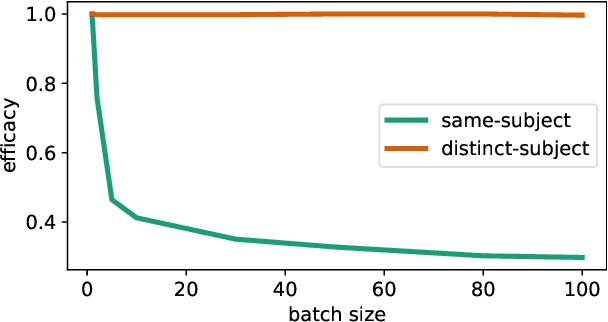

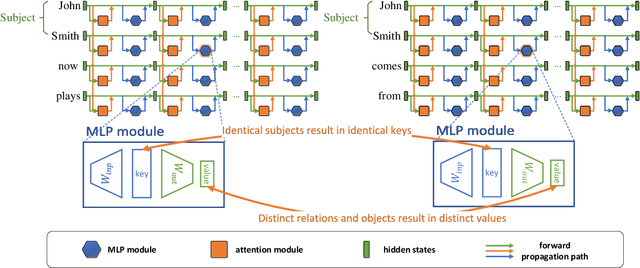

Abstract:As large language models continue to scale up, knowledge editing techniques that modify models' internal knowledge without full retraining have gained significant attention. MEMIT, a prominent batch editing algorithm, stands out for its capability to perform mass knowledge modifications. However, we uncover a critical limitation that MEMIT's editing efficacy significantly deteriorates when processing batches containing multiple edits sharing the same subject. Our analysis reveals that the root cause lies in MEMIT's key value modeling framework: When multiple facts with the same subject in a batch are modeled through MEMIT's key value mechanism, identical keys (derived from the shared subject) are forced to represent different values (corresponding to different knowledge), resulting in updates conflicts during editing. Addressing this issue, we propose MEMIT-Merge, an enhanced approach that merges value computation processes for facts sharing the same subject, effectively resolving the performance degradation in same-subject batch editing scenarios. Experimental results demonstrate that when MEMIT's edit success rate drops to around 50% at larger batch sizes, MEMIT-Merge maintains a success rate exceeding 90%, showcasing remarkable robustness to subject entity collisions.
Towards Explainable Multimodal Depression Recognition for Clinical Interviews
Jan 27, 2025



Abstract:Recently, multimodal depression recognition for clinical interviews (MDRC) has recently attracted considerable attention. Existing MDRC studies mainly focus on improving task performance and have achieved significant development. However, for clinical applications, model transparency is critical, and previous works ignore the interpretability of decision-making processes. To address this issue, we propose an Explainable Multimodal Depression Recognition for Clinical Interviews (EMDRC) task, which aims to provide evidence for depression recognition by summarizing symptoms and uncovering underlying causes. Given an interviewer-participant interaction scenario, the goal of EMDRC is to structured summarize participant's symptoms based on the eight-item Patient Health Questionnaire depression scale (PHQ-8), and predict their depression severity. To tackle the EMDRC task, we construct a new dataset based on an existing MDRC dataset. Moreover, we utilize the PHQ-8 and propose a PHQ-aware multimodal multi-task learning framework, which captures the utterance-level symptom-related semantic information to help generate dialogue-level summary. Experiment results on our annotated dataset demonstrate the superiority of our proposed methods over baseline systems on the EMDRC task.
S-Diff: An Anisotropic Diffusion Model for Collaborative Filtering in Spectral Domain
Dec 31, 2024



Abstract:Recovering user preferences from user-item interaction matrices is a key challenge in recommender systems. While diffusion models can sample and reconstruct preferences from latent distributions, they often fail to capture similar users' collective preferences effectively. Additionally, latent variables degrade into pure Gaussian noise during the forward process, lowering the signal-to-noise ratio, which in turn degrades performance. To address this, we propose S-Diff, inspired by graph-based collaborative filtering, better to utilize low-frequency components in the graph spectral domain. S-Diff maps user interaction vectors into the spectral domain and parameterizes diffusion noise to align with graph frequency. This anisotropic diffusion retains significant low-frequency components, preserving a high signal-to-noise ratio. S-Diff further employs a conditional denoising network to encode user interactions, recovering true preferences from noisy data. This method achieves strong results across multiple datasets.
Efficient Model Compression Techniques with FishLeg
Dec 03, 2024



Abstract:In many domains, the most successful AI models tend to be the largest, indeed often too large to be handled by AI players with limited computational resources. To mitigate this, a number of compression methods have been developed, including methods that prune the network down to high sparsity whilst retaining performance. The best-performing pruning techniques are often those that use second-order curvature information (such as an estimate of the Fisher information matrix) to score the importance of each weight and to predict the optimal compensation for weight deletion. However, these methods are difficult to scale to high-dimensional parameter spaces without making heavy approximations. Here, we propose the FishLeg surgeon (FLS), a new second-order pruning method based on the Fisher-Legendre (FishLeg) optimizer. At the heart of FishLeg is a meta-learning approach to amortising the action of the inverse FIM, which brings a number of advantages. Firstly, the parameterisation enables the use of flexible tensor factorisation techniques to improve computational and memory efficiency without sacrificing much accuracy, alleviating challenges associated with scalability of most second-order pruning methods. Secondly, directly estimating the inverse FIM leads to less sensitivity to the amplification of stochasticity during inversion, thereby resulting in more precise estimates. Thirdly, our approach also allows for progressive assimilation of the curvature into the parameterisation. In the gradual pruning regime, this results in a more efficient estimate refinement as opposed to re-estimation. We find that FishLeg achieves higher or comparable performance against two common baselines in the area, most notably in the high sparsity regime when considering a ResNet18 model on CIFAR-10 (84% accuracy at 95% sparsity vs 60% for OBS) and TinyIM (53% accuracy at 80% sparsity vs 48% for OBS).
MGFs: Masked Gaussian Fields for Meshing Building based on Multi-View Images
Aug 06, 2024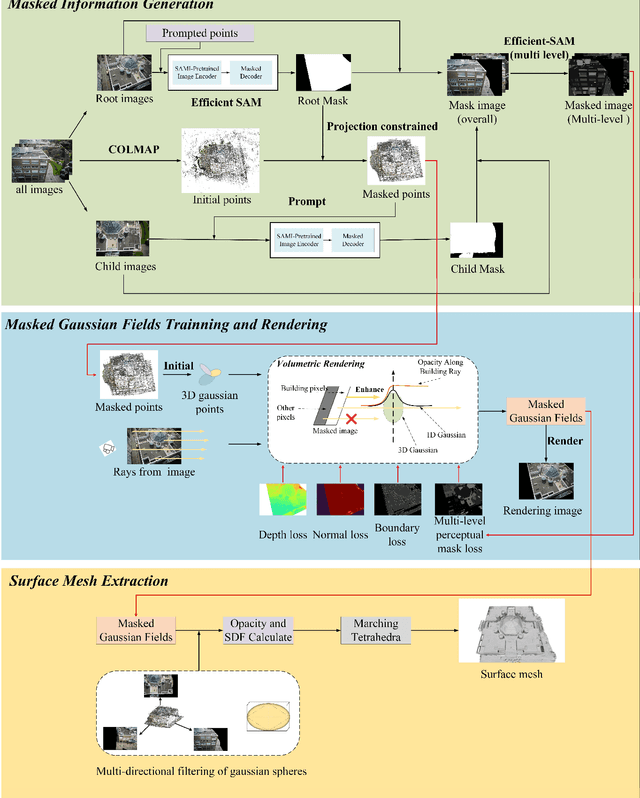
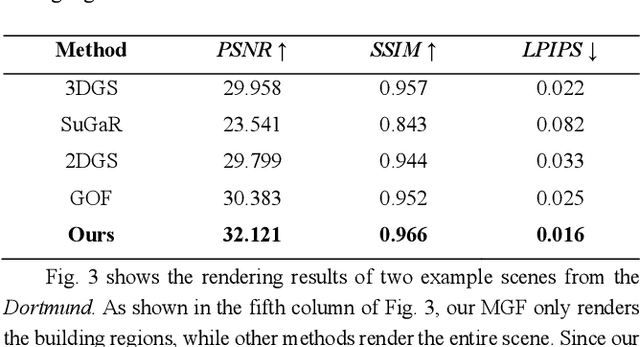
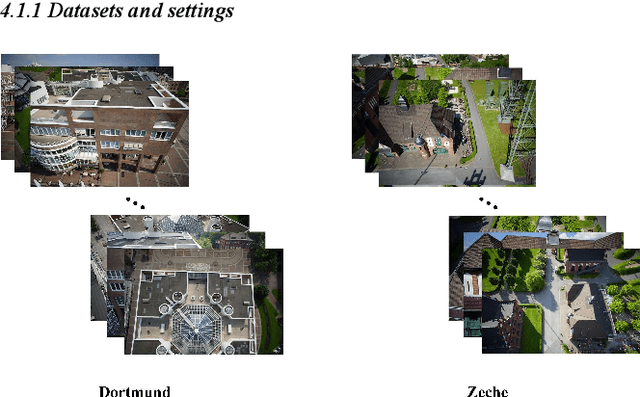
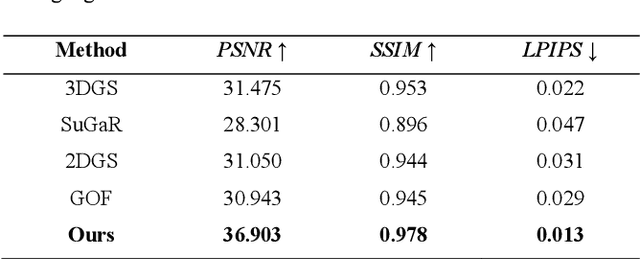
Abstract:Over the last few decades, image-based building surface reconstruction has garnered substantial research interest and has been applied across various fields, such as heritage preservation, architectural planning, etc. Compared to the traditional photogrammetric and NeRF-based solutions, recently, Gaussian fields-based methods have exhibited significant potential in generating surface meshes due to their time-efficient training and detailed 3D information preservation. However, most gaussian fields-based methods are trained with all image pixels, encompassing building and nonbuilding areas, which results in a significant noise for building meshes and degeneration in time efficiency. This paper proposes a novel framework, Masked Gaussian Fields (MGFs), designed to generate accurate surface reconstruction for building in a time-efficient way. The framework first applies EfficientSAM and COLMAP to generate multi-level masks of building and the corresponding masked point clouds. Subsequently, the masked gaussian fields are trained by integrating two innovative losses: a multi-level perceptual masked loss focused on constructing building regions and a boundary loss aimed at enhancing the details of the boundaries between different masks. Finally, we improve the tetrahedral surface mesh extraction method based on the masked gaussian spheres. Comprehensive experiments on UAV images demonstrate that, compared to the traditional method and several NeRF-based and Gaussian-based SOTA solutions, our approach significantly improves both the accuracy and efficiency of building surface reconstruction. Notably, as a byproduct, there is an additional gain in the novel view synthesis of building.
Merge, Ensemble, and Cooperate! A Survey on Collaborative Strategies in the Era of Large Language Models
Jul 08, 2024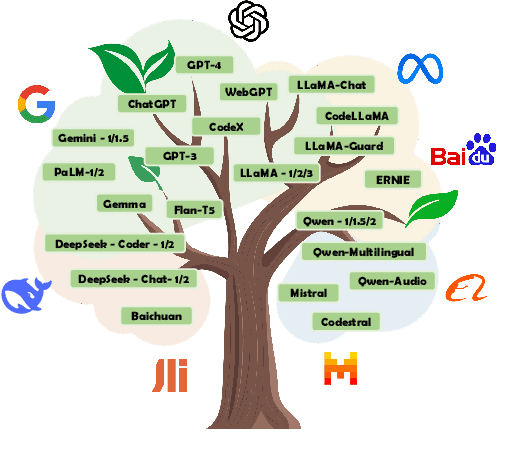


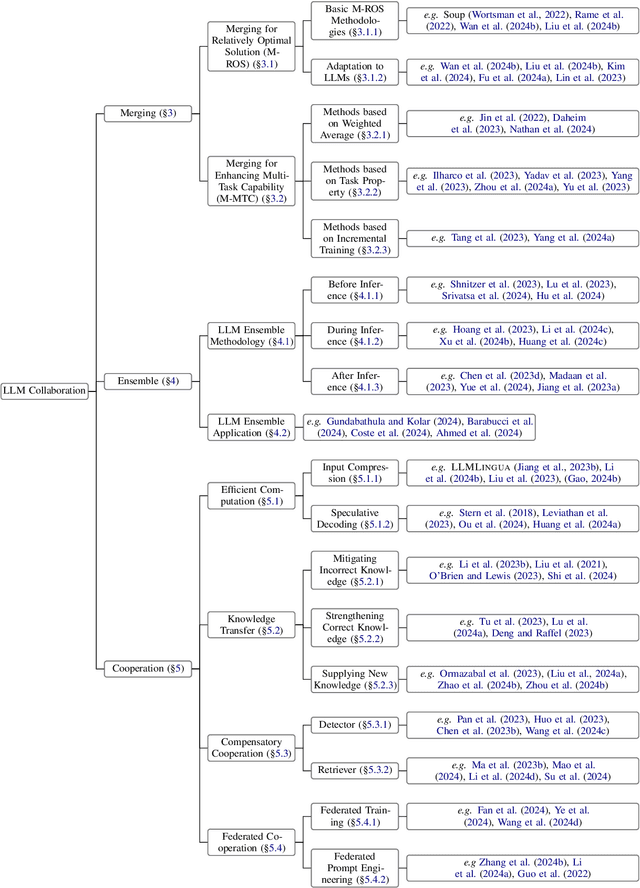
Abstract:The remarkable success of Large Language Models (LLMs) has ushered natural language processing (NLP) research into a new era. Despite their diverse capabilities, LLMs trained on different corpora exhibit varying strengths and weaknesses, leading to challenges in maximizing their overall efficiency and versatility. To address these challenges, recent studies have explored collaborative strategies for LLMs. This paper provides a comprehensive overview of this emerging research area, highlighting the motivation behind such collaborations. Specifically, we categorize collaborative strategies into three primary approaches: Merging, Ensemble, and Cooperation. Merging involves integrating multiple LLMs in the parameter space. Ensemble combines the outputs of various LLMs. Cooperation} leverages different LLMs to allow full play to their diverse capabilities for specific tasks. We provide in-depth introductions to these methods from different perspectives and discuss their potential applications. Additionally, we outline future research directions, hoping this work will catalyze further studies on LLM collaborations and paving the way for advanced NLP applications.
 Add to Chrome
Add to Chrome Add to Firefox
Add to Firefox Add to Edge
Add to Edge